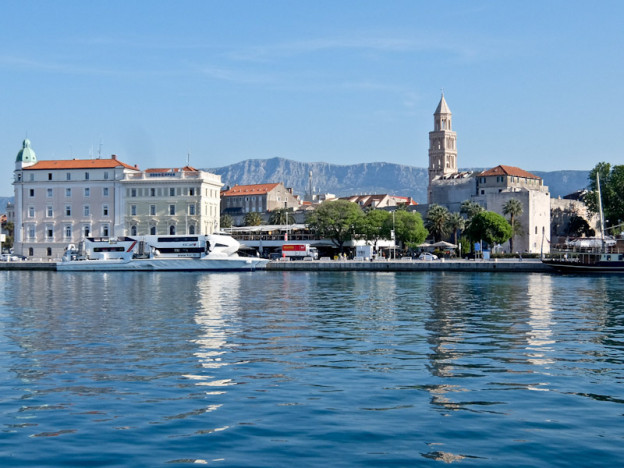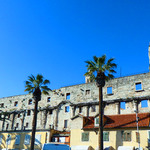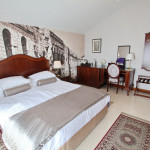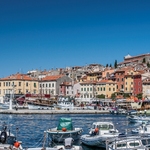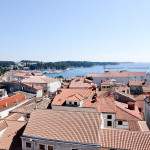Rupert Parker spends a long weekend in Split, Croatia’s second city by the sea.
I’ve never stayed in Split, or spent a weekend in Split usually intent on getting somewhere else, but of course, that’s been my mistake. After all, it’s Croatia’s second city and of great historical importance as it grew out of a Roman palace built by the Emperor Diocletian in 295 AD. So a perfect opportunity to spend a weekend in Split. It was meant as his retirement home, but he died not long after he moved in. Other Roman rulers used it in the years afterwards, but in the seventh century, people fleeing from nearby Salona, sought protection behind its massive walls.
They never left and packed inside its narrow streets are over two hundred buildings including churches, chapels, cafes, and restaurants. The palace’s southern wall is now Split’s attractive seafront Riva, lined with palm trees. Here, the Bronze Gate is the main entrance, and this gives access to the vaulted palace basement where goods were stored. These days it’s an enormous, cavernous space exactly mirroring the imperial living quarters that stood above.
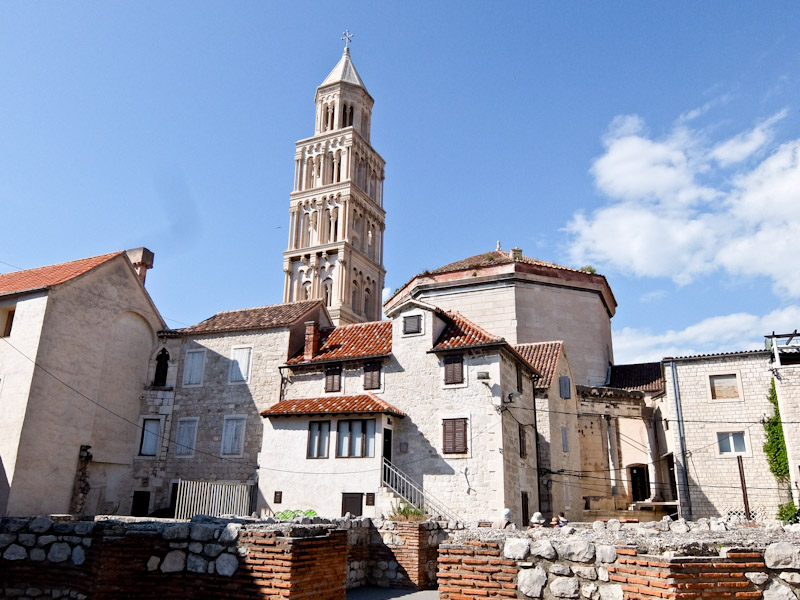
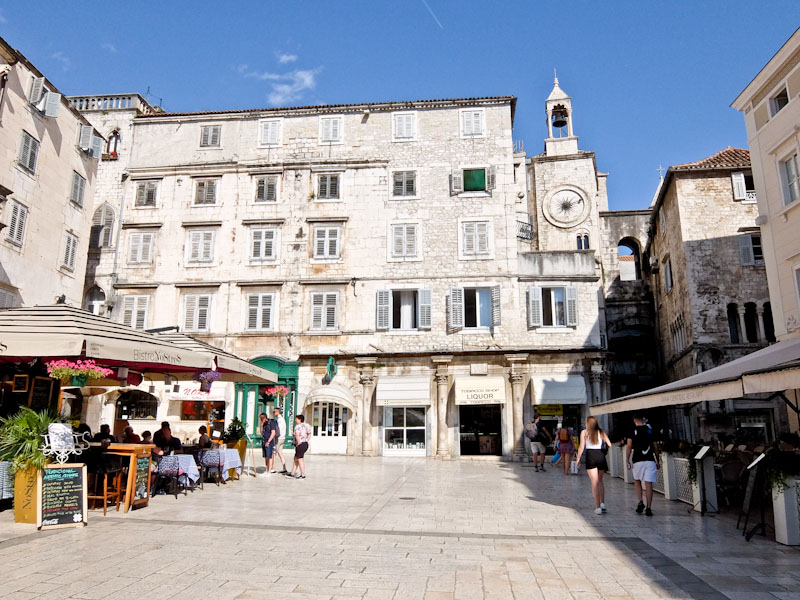
In the fifth century, Christians destroyed the emperor’s sarcophagus and converted his tomb into the octagonal Cathedral of Saint Domnius. It’s named after one of Diocletian’s Christian martyrs and still preserves its original Roman dimensions. The Temple of Jupiter became the cathedral’s baptistry and retains the barrel-vaulted ceiling and decorative frieze of the original building. A bronze John the Baptist has replaced the statue of Jupiter.
High on a rocky outcrop at 360m, 11km northeast of the city, Klis Fortress has guarded the Dalmatian frontier for over two thousand years. It was built by the ancient Illyrian Dalmatae tribe and taken over and enlarged by the Romans. After the fall of the Empire, it became a royal castle, seat of many Croatian kings, before passing between Ottomans, Venetians and finally Austrians. It’s also been a location for Game of Thrones.
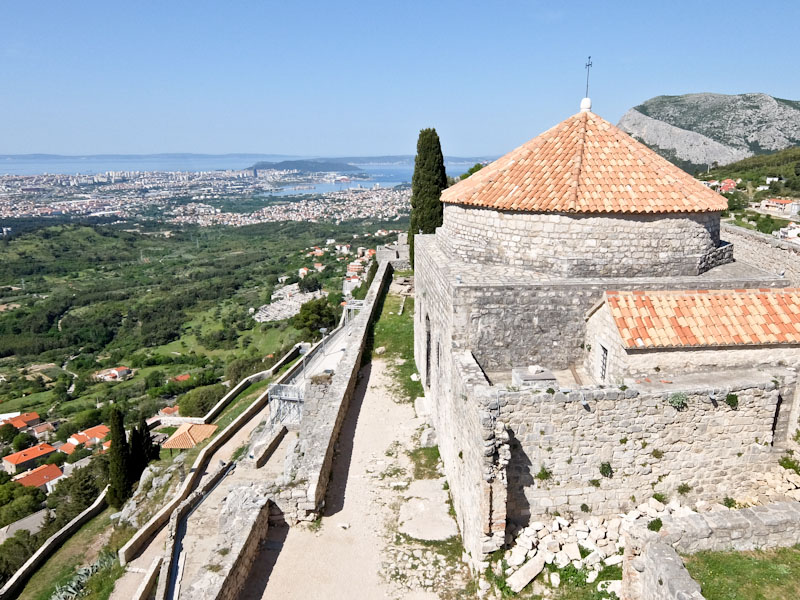
Cobbled walkways lead you up to the defensive positions, where there are glorious views over to the sea and the countryside behind. A remnant of the Turkish occupation is the mosque, topped by a dome, which is now a Catholic church. Inside is a small museum, with displays of arms and uniforms, and a display detailing the history of the castle.
The ruins of Salona are scattered on a hillside below. Originally a Greek settlement, it was occupied by the Romans in 78BC, and they made it their capital of Dalmatia. It grew to become the fourth largest city in the Roman Empire with a population of around 60,000. Churches were built here, after Emperor Constantine legalized Christianity, but in 614 it was attacked by Slavs and Avars and gradually abandoned.
It’s a sprawling site and only a fraction has been excavated. You can still walk on sections of the old city above the field and olive groves. Highlights include Manastirine, a necropolis for Christian martyrs, clustered around the ruins of a fifth-century basilica, the public baths, and an aqueduct. There’s also an Amphitheatre, built in the second century to seat 60,000 spectators.
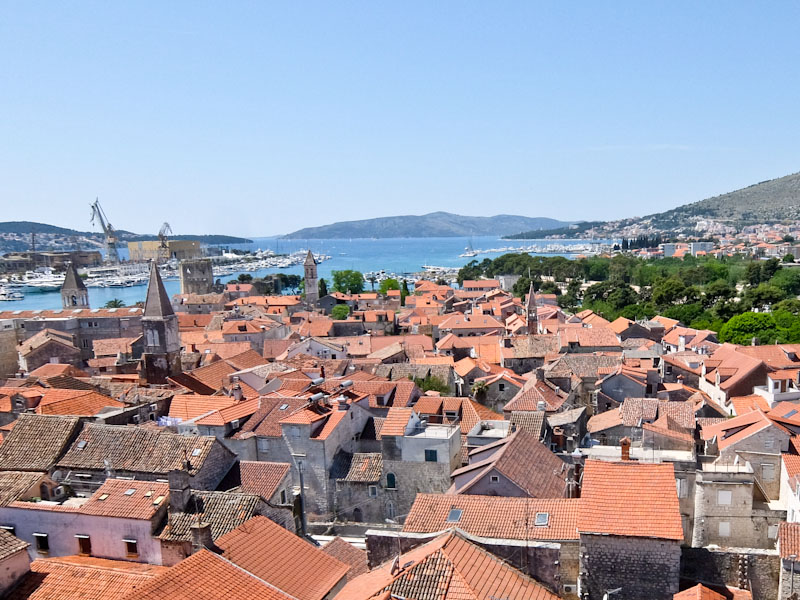
27km from Split, along the coast near the airport, the perfectly preserved medieval town of Trogir is UNESCO world heritage listed. Originally founded by the Greeks in the third century BC, it was taken over by the Romans but flourished under Venetian rule. It sits on an oval island, surrounded by water on all sides, and has maintained a degree of autonomy over the centuries.
The best way of getting here is by a short boat ride from Split. Inside the walls, a labyrinth of cobbled alleys, crammed with palaces, leads to a central square dominated by the Cathedral of St Lawrence. It was built between the thirteenth and fifteenth centuries and it’s worth climbing the bell tower to get an overview of the old town. Opposite is the fifteenth-century town hall, complete with clock tower and classical columns.
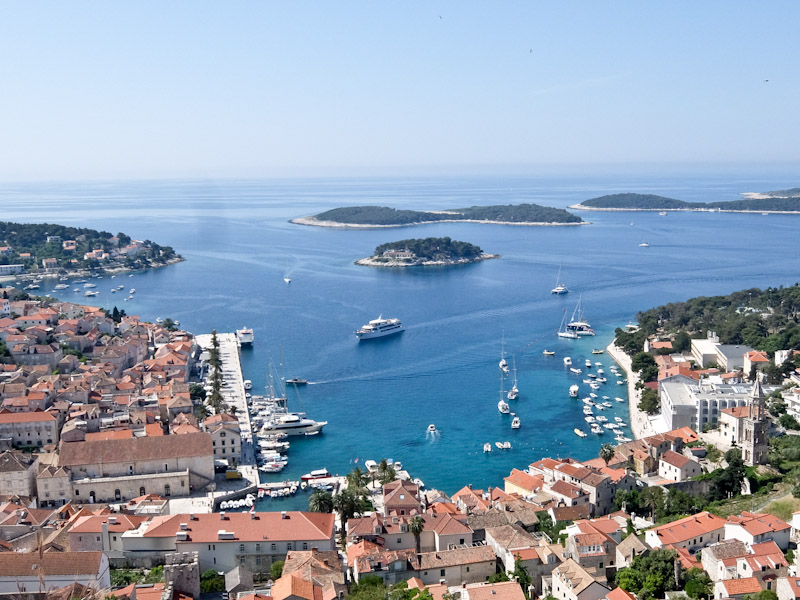
If you fancy island hopping, during your weekend in Split, Hvar is only an hour from Split by fast ferry. The island’s capital is one of the most glamorous of the Adriatic’s historic towns. In medieval times, it was a refuge for pirates until the Venetians took it over in 1240 and these days luxury yachts disgorge the rich and famous. The historic centre is pedestrianised with a long promenade winding around the sea front.
Above the town is the Venetian fortress which offers splendid views over the ancient stone houses around the marina and to the Pakleni islands beyond. Often overlooked is Stari Grad, the original capital, on the north coast. It’s an unassuming little place, with low stone houses clustered around small squares, but none the worse for that. Go here for an authentic taste of local life.
You can easily spend a few days wandering around on weekend in Split, soaking in the atmosphere, and visiting its many cafes, bars and restaurants. At every turn you’re faced with fragments of antique architecture, rescued and repurposed. But it’s also worth venturing out in the surrounding area to discover other bits of history. After all, the Greeks, Romans, Turks, Venetians, Croatians, and Austrians who’ve been here over the years can’t all be wrong.
Tell Me More About A weekend in Split
Croatia Airlines flies direct to Split from London Heathrow.
The Cornaro Hotel is right next to the old town in Split.
Maslina Resort on Hvar is a touch of luxury near Stari Grad.
Hotel Santa Lucia has a terrace restaurant on the main square in Split.
Vanjaka Restaurant in Trogir serves good local food.
Croatia has information about the country.
Visit Split has information about the city.

